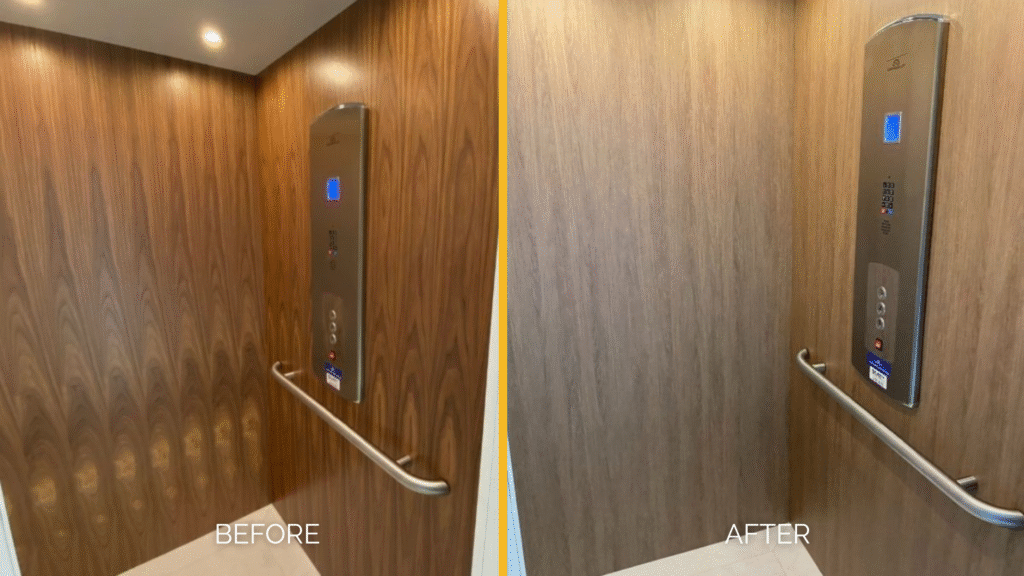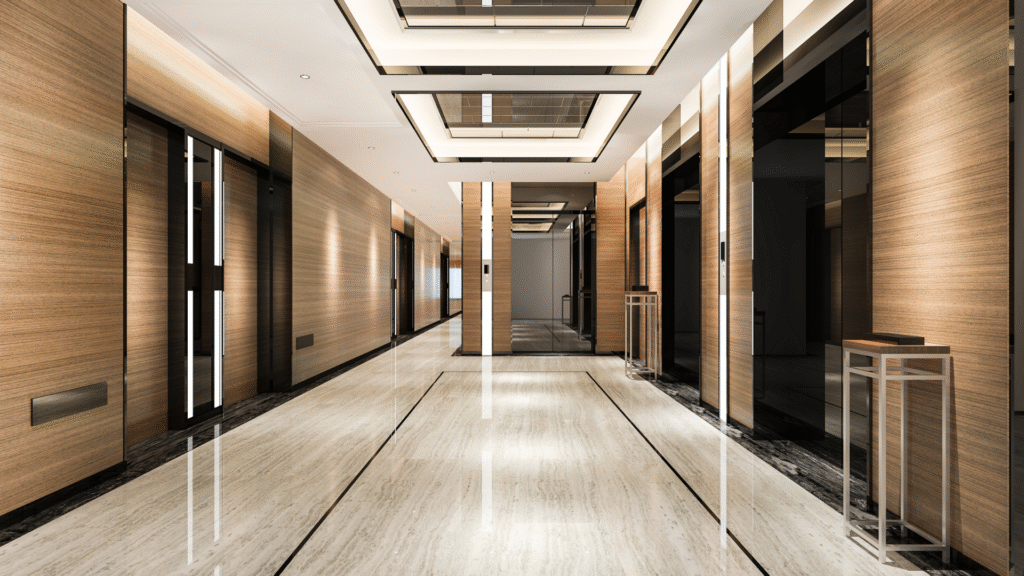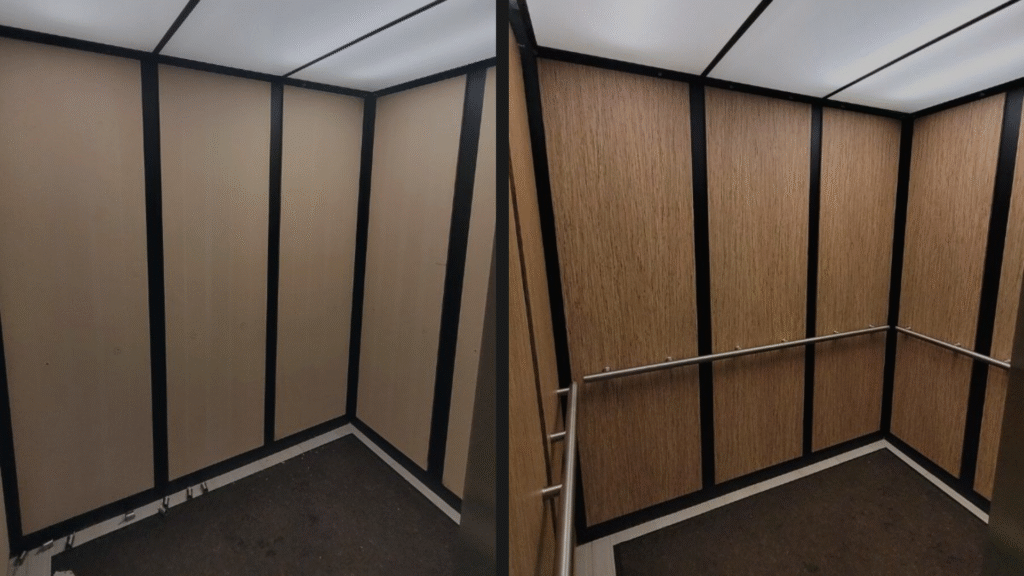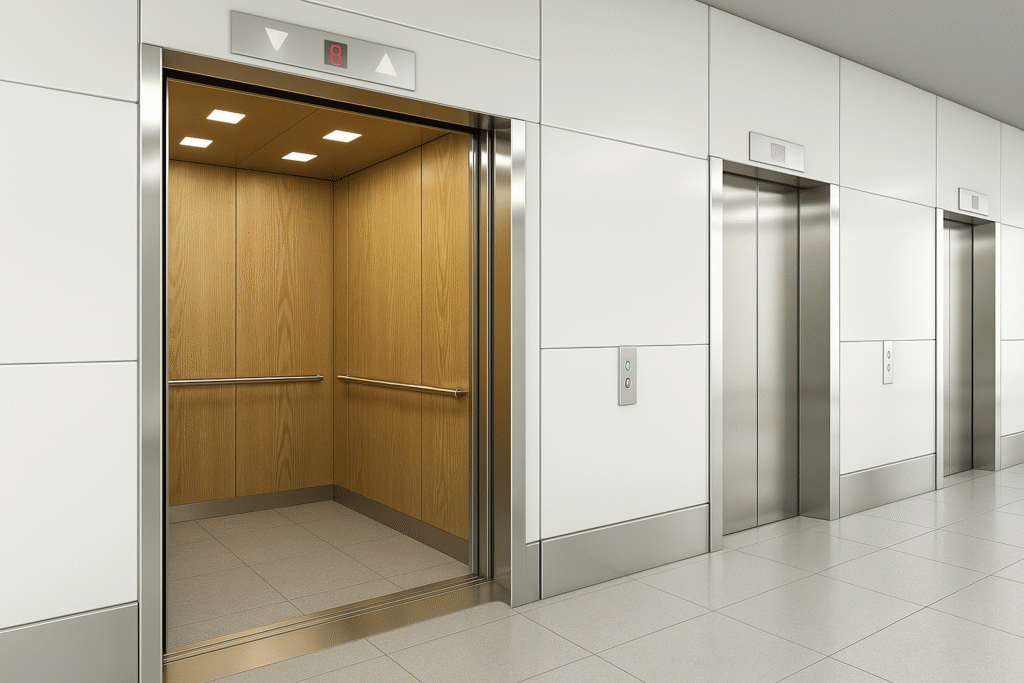Wood has long been associated with warmth, sophistication, and timeless design. In elevators, wood finishes create a sense of comfort and elegance that resonates with guests and tenants. With architectural film, property managers can achieve the same natural look at a fraction of the cost and installation time.

1. Choose the Right Wood Tone
Light woods create a modern, airy feel, while darker woods convey luxury and formality. Selecting the right tone ensures the elevator aligns with the building’s identity. The International Interior Design Association (IIDA) notes that wood tones strongly influence how people emotionally connect with spaces.

2. Pair Wood with Complementary Materials
Mixing wood with metallic trims, stone-inspired panels, or fabric-look finishes can create a balanced, high-end design. Architectural film makes it easy to achieve these combinations. Inspiration can be drawn from Hospitality Design Magazine, which often showcases projects where wood accents enhance the overall guest experience.

3. Focus on Durability and Maintenance
Wood-look films are resistant to scratches, stains, and fading, ensuring that the elevator maintains its appearance even with heavy daily traffic. Compared to real wood panels, they require minimal maintenance, reducing long-term operational costs.

4. Align with Guest Expectations
In hospitality and residential spaces, wood finishes convey a premium atmosphere. Guests associate wood tones with quality, making elevators an extension of the brand experience. The Hotel Management Journal emphasizes that guest satisfaction often increases when design elements create a sense of warmth and familiarity.
Conclusion
Wood elevator refinishing is a simple yet powerful way to elevate guest experience. With endless design options and durable materials, property managers can achieve luxury without the complexity of traditional renovations.

